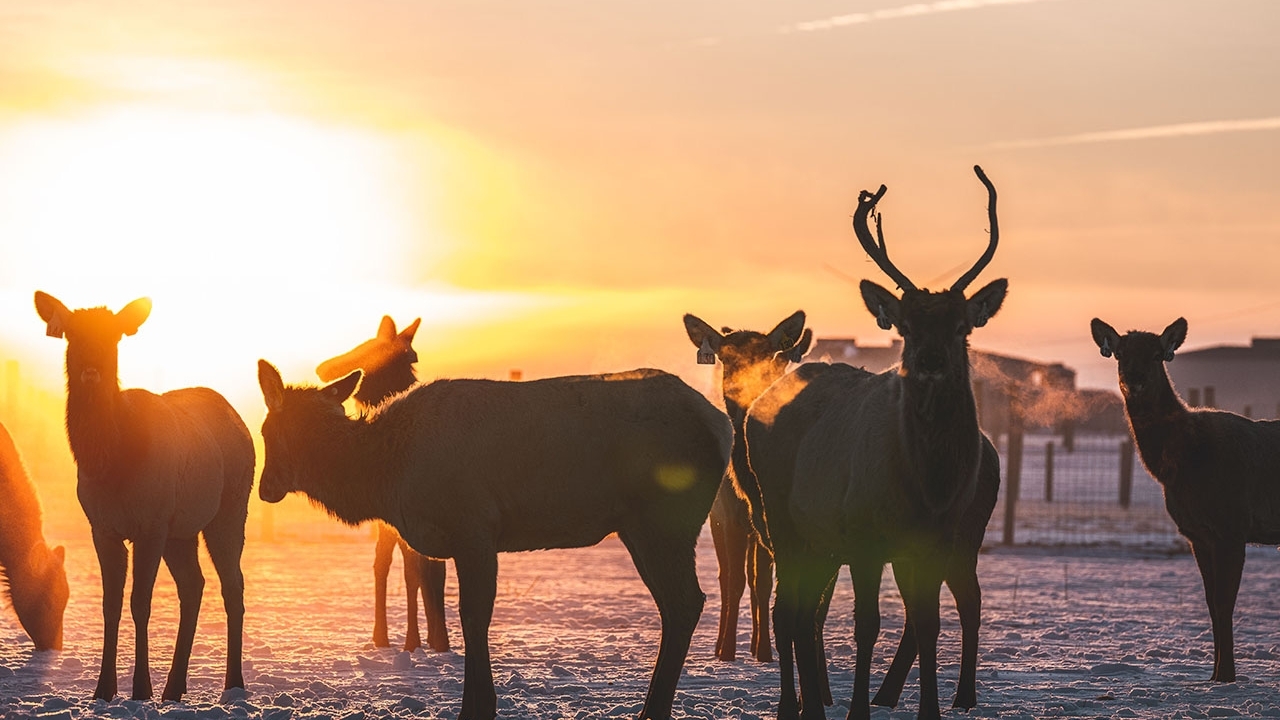Bovine Tuberculosis in Cervids

Bovine tuberculosis (bTB) is primarily a disease of cattle that can affect other mammals, including cervids, goats, sheep, and humans. Mycobacterium bovis (M. bovis) is the bacteria that causes the disease.
bTB has been nearly eliminated from cattle and farmed cervids in the United States. It is endemic in wild white-tailed deer in parts of Michigan.
Cervids such as white-tailed, mule, elk, red, fallow, and sika deer are susceptible to bTB. The bacteria that cause the disease can survive outside a host species for several months, especially in cold, moist, and dark conditions.
The risk of bTB infection for humans is generally low. Risk increases when working with infected animals, particularly when you have breaks in the skin, or if you eat raw dairy products.
Severe disease can develop over the course of a few months or years. Once clinical signs are apparent, death often occurs within 1 to 2 weeks. Here's what to look for:
- Swollen lymph nodes
- Typically, head lymph nodes are the first to show infection, indicated by swelling and dead tissue. Other lymph nodes may enlarge, rupture, and drain in some animals. Greatly enlarged lymph nodes can obstruct blood vessels, airways, or the digestive tract.
- Respiratory signs
- Animals may have a moist or rapid cough and have difficulty breathing. They may develop acute respiratory distress when fluid builds up in the lungs.
- Lesions
- As bTB progresses, lesions can develop on the surface of the lungs, chest cavity, and other areas of the body.
- Fever
- Some affected animals may have a low-grade, fluctuating fever.
- Loss of appetite
- Animals may experience changes in their eating habits.
- Weakness
- As the disease progresses, animals may become thin and frail. Intermittent diarrhea and constipation may be seen if the digestive tract is involved.
- Test new animals for bTB before introducing them to the herd.
- Follow Federal regulations for TB-accredited cervid herds.
- Avoid contact between farmed cervids and wildlife.
There is no practical treatment for bTB in cervids.
Report Signs of Animal Disease
Producers or owners who suspect an animal disease should contact their veterinarian to evaluate the animal or herd. Find an accredited veterinarian.
Animal health professionals (veterinarians; diagnostic laboratories; public health, zoo, or wildlife personnel; and others) report diagnosed or suspected cases of nationally listed reportable animal diseases to APHIS Area Veterinarians in Charge and to the State animal health official as applicable under State reporting regulations.
Controlling Bovine Tuberculosis in Farmed Cervids
- Primary and Secondary Serological Test for Diagnosing Bovine Tuberculosis (TB) in Farmed and Captive Cervids (265.19 KB)
- Bovine Tuberculosis Eradication Uniform Methods and Rules (89.99 KB)
- Title 9, Code of Federal Regulations, Part 77, Subpart C
- Animal Additions to TB-Accredited Cervid Herds (125.49 KB)
- Title 9, Code of Federal Regulations, Part 50
Dual Path Platform Test
- Dual Path Platform (DPP) Test Evaluation in Mule and Sika Species (112.67 KB)
- Sample Collection Protocol DPP Test Evaluation in Mule and Sika Species (235.19 KB)
- DPP Submission Policy Instructions to Designated Accredited Veterinarians (279.57 KB)
- FAQs for the Cervid Dual Path Platform DPP VetTB Assay Tests for Bovine TB (126.7 KB)
- Post-Mortem Images of Tuberculosis Lesions (575.38 KB)
The disease is primarily monitored through skin testing on individual animals or whole herds and voluntary inspection after slaughter.
- Skin Testing
- The Single Cervical Tuberculin (SCT) test is a screening or primary test for bTB. If the SCT is positive, the animal is considered a suspect and the Comparative Cervical Tuberculin (CCT) test is done to verify the result. The CCT must be done within 10 days or after 90 days of the SCT. If the CCT is positive, the cervid is considered a reactor.
- Serological Testing
- The Dual Path Platform VetTB Assay (DPP) is used to test for bTB in elk, red deer, white-tailed deer, fallow deer, and reindeer. Note: The test must be conducted at the National Veterinary Services Laboratories (NVSL).
- If the first DPP test (called the primary test) is positive, the animal is classified as a suspect and a second DPP test is done no sooner than 30 days from the initial sample collection date. If the second DPP is negative, the animal is deemed negative. If the second DPP is positive, the cervid is classified as a reactor.
- The regulations require the following actions:
- Suspect animals must be quarantined until they are either retested as described above or euthanized, examined for lesions, and tested for bTB at NVSL.
- Reactors must be quarantined until they are euthanized, examined for lesions, and tested for bTB at NVSL.
- If bTB is cultured from an animal, NVSL uses genome sequencing to determine if the TB organism is related to other TB organisms cultured from the herd or other herds and potentially identify where the disease came from.
APHIS Wildlife Services conducts surveillance and research on dozens of wildlife diseases, including bovine tuberculosis. For more information, visit our National Wildlife Disease Program and National Wildlife Research Center.

